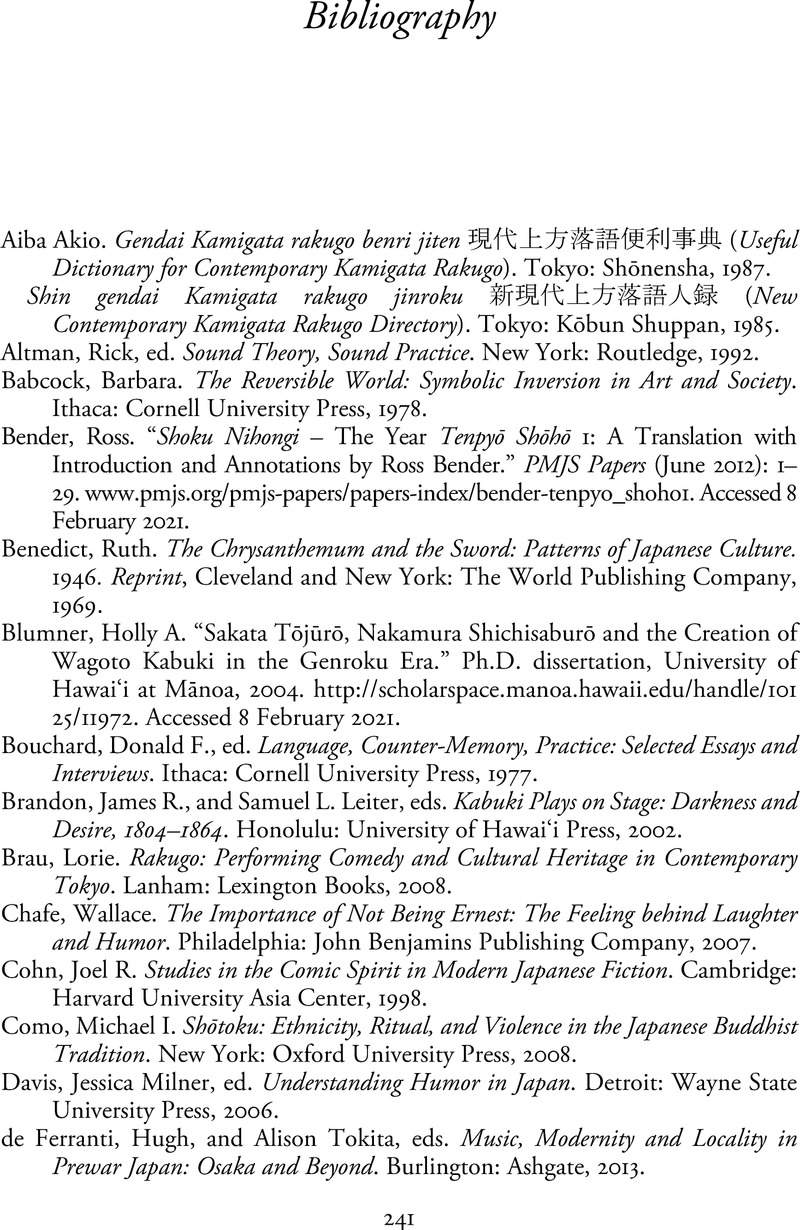Book contents
- The Comic Storytelling of Western Japan
- Frontispiece
- The Comic Storytelling of Western Japan
- Copyright page
- Contents
- Illustrations
- Author’s Preface: COVID-19 and Tenugui Face Masks
- Acknowledgments
- A Note on Romanization and Conventions
- A Note on the Cover Art
- Introduction
- Part I
- Part II
- Book part
- Bibliography
- Index
- References
Bibliography
Published online by Cambridge University Press: 06 August 2021
- The Comic Storytelling of Western Japan
- Frontispiece
- The Comic Storytelling of Western Japan
- Copyright page
- Contents
- Illustrations
- Author’s Preface: COVID-19 and Tenugui Face Masks
- Acknowledgments
- A Note on Romanization and Conventions
- A Note on the Cover Art
- Introduction
- Part I
- Part II
- Book part
- Bibliography
- Index
- References
Summary

- Type
- Chapter
- Information
- The Comic Storytelling of Western JapanSatire and Social Mobility in Kamigata Rakugo, pp. 241 - 252Publisher: Cambridge University PressPrint publication year: 2021

